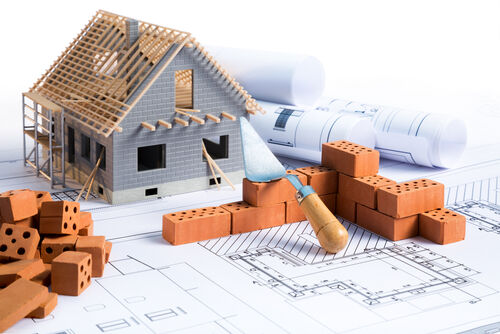Industrial construction services involve the construction and management of factories, warehouses and other highly-specialized facilities. They also include the construction of large engineering projects such as dams and roads.
Safety policies ensure that workers use the proper safety measures when working and conform to the safety regulations of their local area. The programs also include an approach to recording the progress made and reviewing it. It also includes the identification of any deviations from the plan of work and taking corrective actions.
Facilities Design
The planning of a facility is the method of designing spaces with maximum efficiency. The process involves searching through all the possible solutions, or designs. The search involves the assessment of the potential risk in operation like structural issues and compliance issues.
For industrial construction, planning is an essential step. It identifies the activities and materials required to bring the design a physical reality. It also determines which order to arrange the tasks. This can help cut down on the duration and costs involved in construction.

The first step is to conduct an examination of geodesic and topographic conditions on the construction site. It is vital to prepare the site for construction and determine where equipment will be located. The work includes analyses of the stability of natural and man-made soil varieties. This is used to evaluate the suitability of a site for construction at ground level and also for underground storage. The tool can also be used to design foundations, machinery on site and other equipment.
MEP Systems for Industrial Buildings
MEP Systems are crucial to the functionality of buildings. They manage air and temperature quality, power the lighting and appliances, as well as offer dependable water sources. The knowledge of these essential construction elements will allow you to take better decisions, and also influence project timelines and costs.
Engineers must take into account every aspect of building when designing MEP systems during the initial part of the process. It is important to determine how various building systems will interact to avoid equipment conflict during installation. MEP designers incorporate sustainability into the design process with the help of efficient energy equipment, and by minimizing carbon footprints.
In the process of construction, MEP engineers must produce coordination plans that include the building’s services together in one drawing to coordinate their positions and prevent conflicting systems. In the construction phase, MEP engineers must create sketches of shop layouts that contain all details required by a fabrication plant to install and build the MEP systems, including the length, kind and location of welds, number and kind of fittings, etc. In addition, they should prepare start-up, testing as well as commissioning documents and maintenance requirements and protocols.
Industrial Construction Project Management
To design and implement an industrial construction venture there are a variety of steps that must be followed. The entire group of specialists to carry out the project beginning with the planning phase and building of the facility to managing it. To ensure that there are no delays, each step of the project should be carefully managed.
The first step for managing commercial construction projects is to plan and establish a set of clearly defined goals and responsibilities. This builds trust between contractor and client. The scope of the project is also reduced to provide the necessary foundation for success. This ensures all parties are informed of their respective obligations, roles and responsibilities to ensure that there are no redundancies or missed projects are avoided.
Even with exhaustive planning commercial construction projects face unanticipated changes during the construction process. This could be because of modifications to design or construction conditions, or even material shortages. Effective change management relies on transparent communication as well as ongoing cooperation to ensure that the project stays within budget and on schedule. This also means leveraging the technology in order to accurately and rapidly update the estimates of projects.
Industrial Building Security Compliance
The implementation and maintenance of safety procedures is crucial to reduce the risk of disruptions to construction projects because of the risky nature of industrial construction. This is why you need a comprehensive system of documentation, highlighting the correct precautions to take on the particular location and showing the compliance with regulations which could protect against any liability.
An in-depth assessment of risk is the very first step towards taking effective safety precautions. It helps identify risks that could be present and take measures to prevent them from occurring. Assessment and evaluating risk is a constant one, because new data including the most innovative personal protective equipment or the latest regulatory developments, have to be continuously monitored.
A well-designed safety management system requires the buy-in of employees in order to boost their performance and propel ahead. This is achieved by a comprehensive worker-training program that bridges the gap between rules in writing and the safety procedures at work. Furthermore, technology integration is key, leveraging the power of collaboration as well as digital tools to ensure an efficient monitoring of compliance and issue resolution. By combining these elements, it will enable you to develop a construction safety plan that encourages a positive workplace culture, increases project outcomes and maintains the integrity of your industry.
Construction Site Preparation for Industrial Sites and Foundation Construction
Preparing the construction site is the most important step to take that prepares the ground to ensure a smooth construction, eliminates risks and delays, and ensures that a project stays on schedule. This can reduce the risk that damage will occur to the building after completion.
The next step is testing soil and installing drainage and Septic tanks. It also includes creating roadways for access to construction vehicles. The project may require remove debris or obstacles, in accordance with the scope of the construction project.
After the soil has been prepared, contractors grade the ground. The dirt is smoothed to create a solid foundation. This may include slopes, roadways, walkways and other elevations required. The soil will be compacted tightly to achieve the desired density. This will help avoid any future issues that could result from soil that is loose.
Then, gia xay nha phan tho set up the area for work by constructing temporary points of access for construction vehicles and implementing erosion control methods. It is important to protect the environment from disturbances by decreasing them and protecting nearby property. These measures are crucial for ensuring the construction of industrial facilities is in line with environmental regulations.






